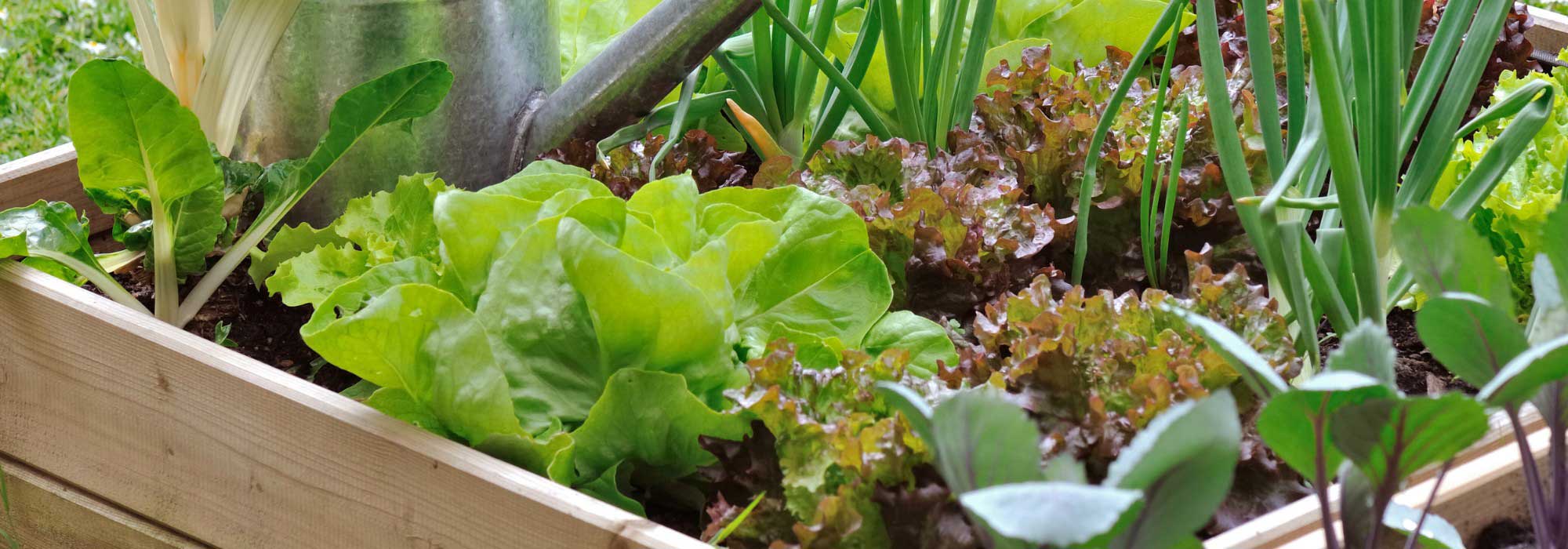
Beginner's Vegetable Garden: 7 Ultra-Easy Vegetables to Grow
Perfect vegetables for getting started in the vegetable garden
Contents
Dreaming of starting a vegetable garden but unsure which vegetables to grow first? Good news, there are vegetables that grow easily and require neither complicated equipment nor special skills. Growing your own vegetable garden, even in a small space, allows you to harvest fresh, tasty, and healthy vegetables while enjoying watching their growth. By choosing varieties suited for beginners, some even thrive in pots, you avoid failures and quickly gain confidence.
Here’s a list of seven easy-to-grow vegetables for a successful harvest, even if you’ve never got your hands dirty before!
The Basics for Starting Your First Vegetable Garden
- Sun exposure: Most vegetables need 6 to 8 hours of sunlight per day. Position your vegetable garden in a sunny spot sheltered from the wind. Spinach, lamb’s lettuce and rocket tolerate partial shade better. In southern regions, opt for partial shade during the hottest hours to avoid heat stress, which risks causing lettuces to bolt too quickly, young shoots to shrivel pitifully or courgettes to abort.
- Fertile, well-drained soil: Loosen the soil before sowing and enrich it with compost or potting mix. Avoid overly heavy soils that retain water and prevent certain roots from growing properly.
- Sowing or young plants? For beginners, it’s simpler to choose ready-to-plant vegetable young plants rather than sowing. Already developed and more robust, young plants (particularly tomatoes, courgettes or lettuces) offer easier handling and reduce mistakes. A few exceptions though: radishes, peas and beans should be sown directly in the ground as they don’t transplant well.
- Appropriate watering: Water in the morning or evening, at the base of plants to avoid diseases. Adjust frequency according to vegetables: lettuces and radishes prefer moist soil, while peas and courgettes tolerate slight drought better.
Tip: Good mulching (covering bare soil between vegetable ranks with mulch) retains moisture, limits weeds and reduces watering needs. Companion planting, like growing courgettes with nasturtiums or tomatoes with basil, also helps naturally deter certain pests, avoiding chemical treatments.
Radish: The Easiest and Fastest to Grow
Why choose them?
Radishes are perfect for beginners: they grow in less than a month, take up little space and require very little maintenance.
Growing tips:
- Sow directly in the ground or in pots, from spring to autumn.
- Water regularly to prevent them from becoming too pungent.
- Harvest as soon as they are large enough, in 3 to 4 weeks.
Easy varieties:
- 18-Day Radish : ultra-fast, harvest in less than 3 weeks.
- The Flamboyant: elongated, resistant to bolting.
- Radish ‘Gaudry 2’: very early, mild and crunchy.
- Use our radish seed tapes!
→ Also read: How to choose your radishes?
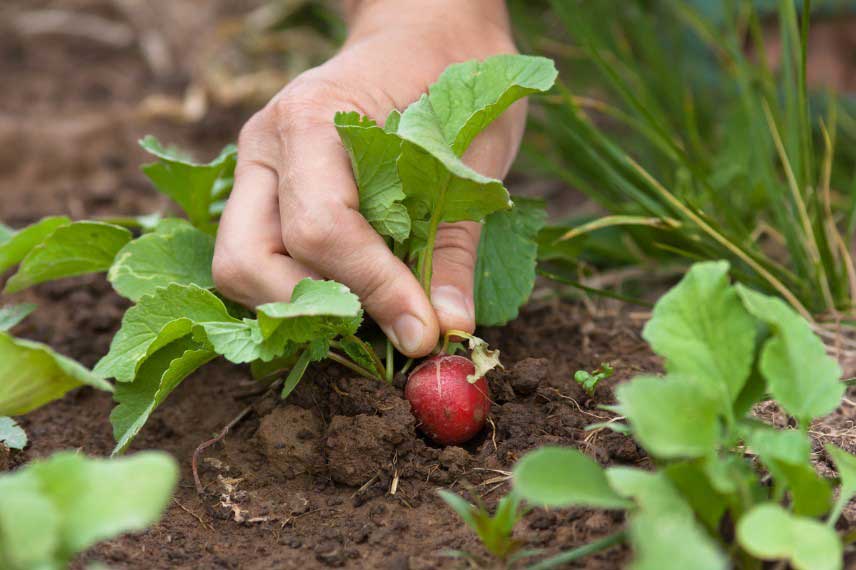
Salads: Quick and Very Easy
Why Choose Them?
Lettuces grow quickly and are easy to cultivate. Some varieties regrow after harvest, allowing for continuous production.
Growing Tips:
- Plant (or rather transplant) young lettuce shoots, which you can find ready to plant (in buckets or trays) or opt for seed tapes.
- Water regularly to prevent them from bolting too quickly.
- Harvest leaf by leaf to extend production.
Easy Varieties:
- ‘Salad Bowl’ Lettuce Seed Tape : an ideal cut-and-come-again lettuce for continuous harvest.
- Moroccan Cress Lettuce Seed Tape: a small salad with very simple cultivation.
- Mixed Baby Greens : easily sown in rows or interplanted with slower-growing vegetables like beans, tomatoes, or cucumbers.
→Read also: Easy-to-Grow Salads for Beginners
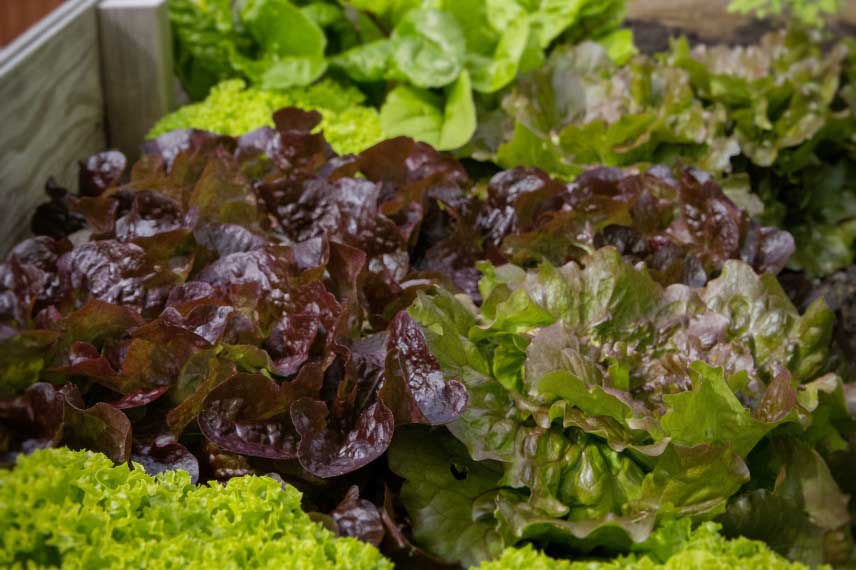
Courgette: fairly easy for beginner gardeners
Why choose them?
A single courgette plant can yield dozens of squashes. It grows quickly and requires little maintenance. Around two months after planting, your courgettes will be ready for harvest.
Growing tips:
- Plant in open ground after the last frosts, in full sun.
- Water at the base, avoiding wetting the leaves to prevent diseases.
- Harvest the fruits while still young for more tender courgettes.
- Pick them regularly to encourage continuous production throughout summer.
Easy varieties:
- Yellow courgette ‘Sebring F1’: a vigorous, flavoursome, and early variety.
- Choose from our plug plant courgettes and discover all our courgette varieties for sowing or planting.
→ Also read: Sowing squashes and courgettes
Where, when and how?
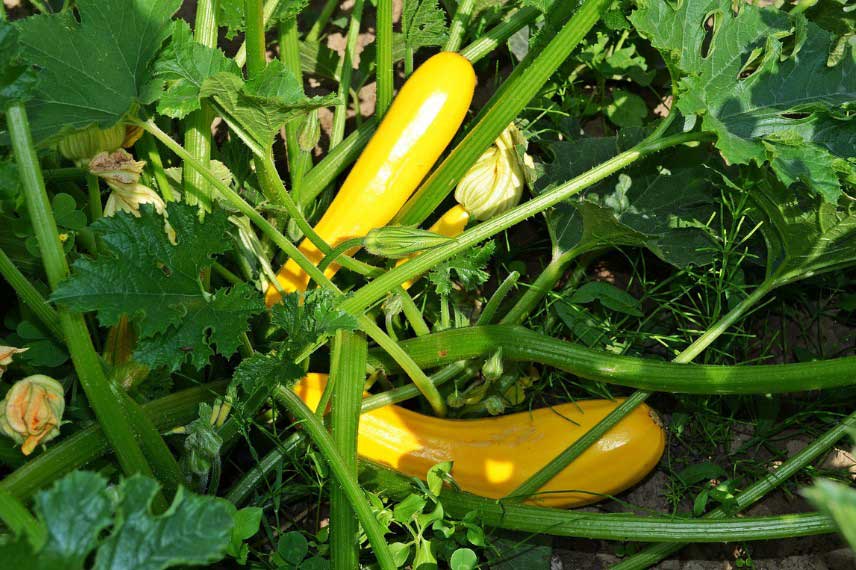
Cherry tomatoes: essential for a first vegetable garden
Why Choose Them?
Cherry tomatoes are easier to grow than larger varieties and produce abundantly all summer.
Growing Tips:
- Plant them in full sun, in well-drained soil.
- Stake the young plants to prevent them from drooping.
- Water regularly, avoiding wetting the foliage.
Easy Varieties:
- Cherry Tomato ‘Baby Boomer F1’: A crunchy and flavourful cherry tomato.
- ‘Supersweet Tomato’: Produces an abundance of very sweet small tomatoes.
- Discover all our cherry and cocktail tomato plug plants.
→ Read also: How to Choose Your Cherry or Cocktail Tomatoes?
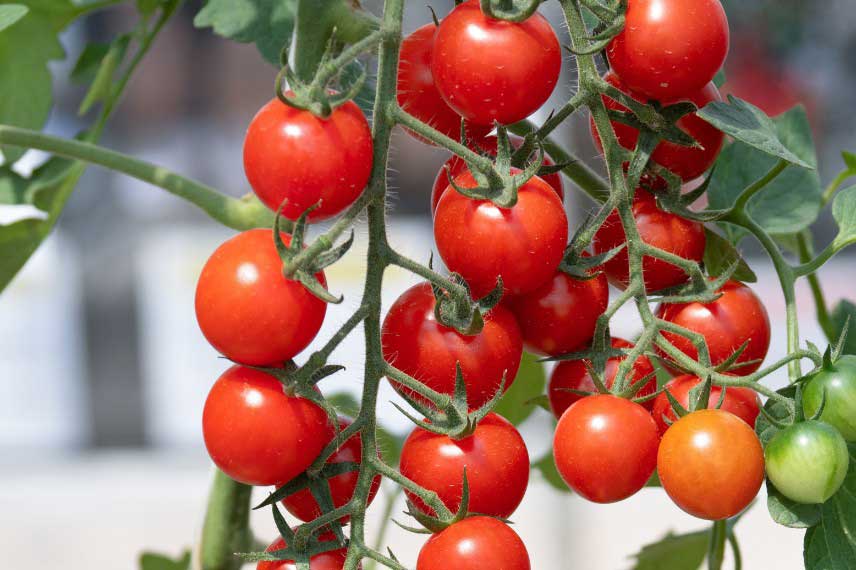
Sugar snap peas: the least easy of the easiest
Why choose them?
Mangetout peas are among the easiest vegetables to grow. The entire pod can be eaten, making them very practical. They require minimal maintenance and provide an abundant harvest. Plus, dwarf varieties don’t need supports, simplifying their cultivation and making them ideal for beginner gardeners.
Growing tips:
- Sow directly in the ground in spring, in well-drained soil.
- Provide supports for climbing varieties.
- Harvest when the pods are well-formed but still flat.
Easy varieties:
- Mangetout pea ‘Corne de Bélier’ : productive and delicious!
- Mangetout pea ‘Oregon Sugar Pod’ : extra-wide pods that remain tender for a long time and are very sweet.
- Mangetout pea ‘Carouby de Maussane’: rapid growth, ideal for beginners, with a very abundant yield. This mangetout variety doesn’t produce strings.
→ Read also: Growing sugar snap peas or mangetout peas?
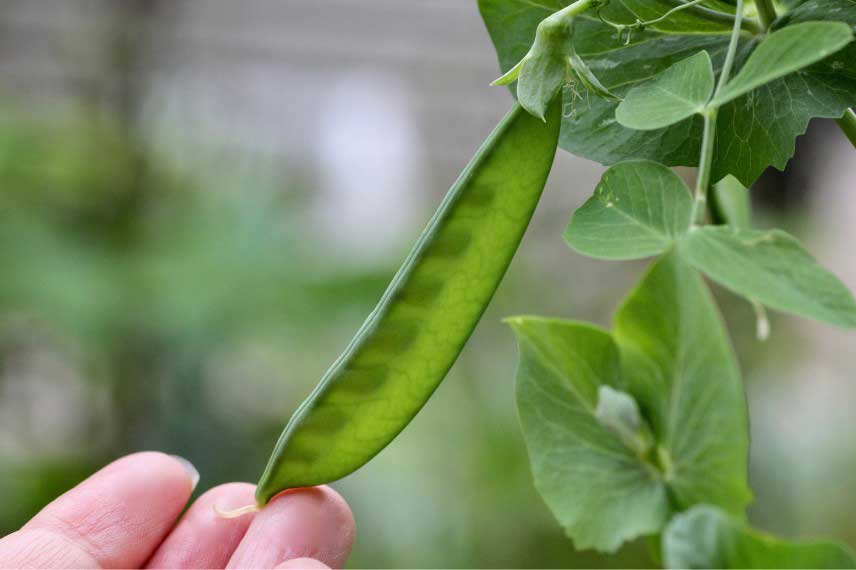
Spinach: Fast and Easy Shoot Growth
Why Choose Them?
Spinach is highly resilient and grows almost all year round. It thrives in cool climates.
Growing Tips:
- Sow directly in the ground or in pots, in partial shade.
- Water regularly for tender leaves.
- Harvest leaf by leaf for continuous production.
Easy Varieties:
- Spinach ‘Giant Winter’: cold-resistant, ideal for autumn and winter. (also available as a seed tape)
- Spinach ‘Monstrous Viroflay’: grows quickly and produces large, tender leaves. A truly XXL, greedy spinach!
- Spinach ‘Matador’: suitable for spring and autumn sowing, it offers excellent productivity and can be grown year-round.
→ Read also: Spinach: Sowing, Growing, and Harvesting in the Vegetable Garden
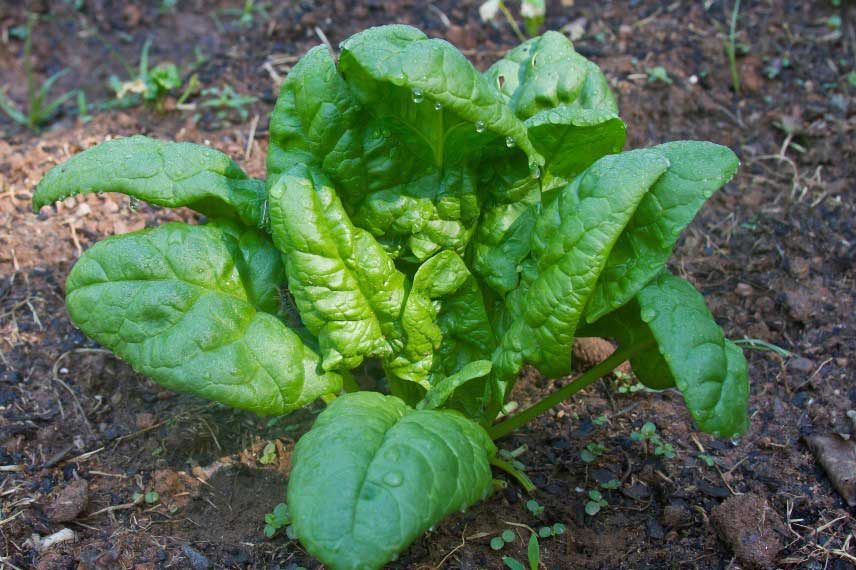
Easy-to-Grow Vegetables: Spinach
Green beans: easy, highly productive, but a bit slower-growing
Why Choose Them?
Green beans grow quickly and produce abundant harvests over several weeks. It’s best to grow dwarf varieties of green beans, as they don’t require staking and are easier to manage in small spaces. These varieties are ideal for urban gardens or container growing. These beans can be eaten whole, like mange-tout.
Growing Tips:
- Sow directly in the ground after the last frosts.
- Water regularly, especially during dry spells.
- Harvest frequently to encourage production.
Easy Varieties:
- Dwarf Bean ‘Contender’: highly productive, a delicious variety, very rewarding and simple to grow.
- Dwarf Bean ‘Purple Queen’: hardy, stringless, harvested at the extra-fine to fine stage or as mange-tout.
- Dwarf Butter Bean ‘Fructidor’: long harvest from June to October, excellent flavour. The flesh is meltingly tender.
→ Read also: How to Choose Beans?
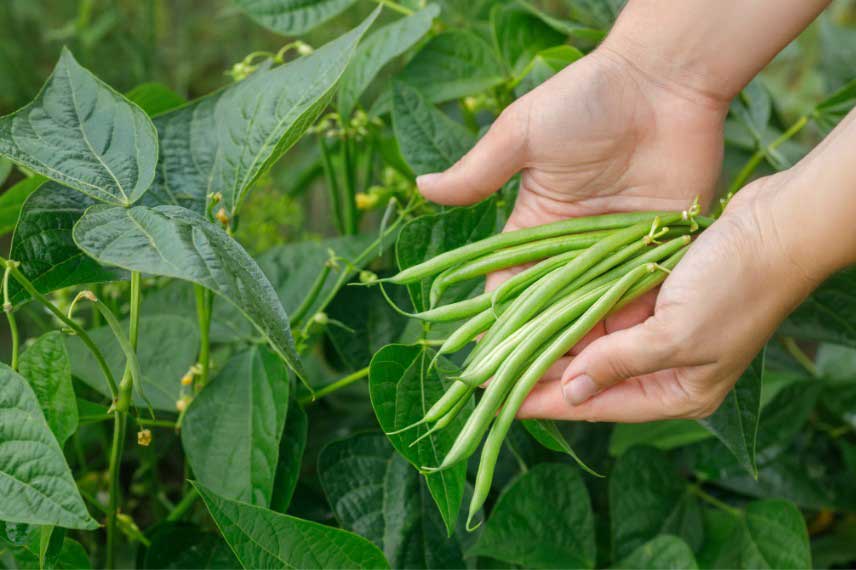
Other easy vegetables for beginner gardeners
If you’re looking for even more options for an easy vegetable garden, here are some other ultra-simple vegetables to grow for beginners: Swiss chard, rocket, kale, cucumber (especially mini varieties like ‘Rocky’), round carrot ‘Marché de Paris’, and butternut squash.
→ Read also: Beginner’s vegetable garden: 7 ultra-easy vegetables to grow and Vegetable garden: 7 easy vegetables to sow in early summer
- Subscribe!
- Contents
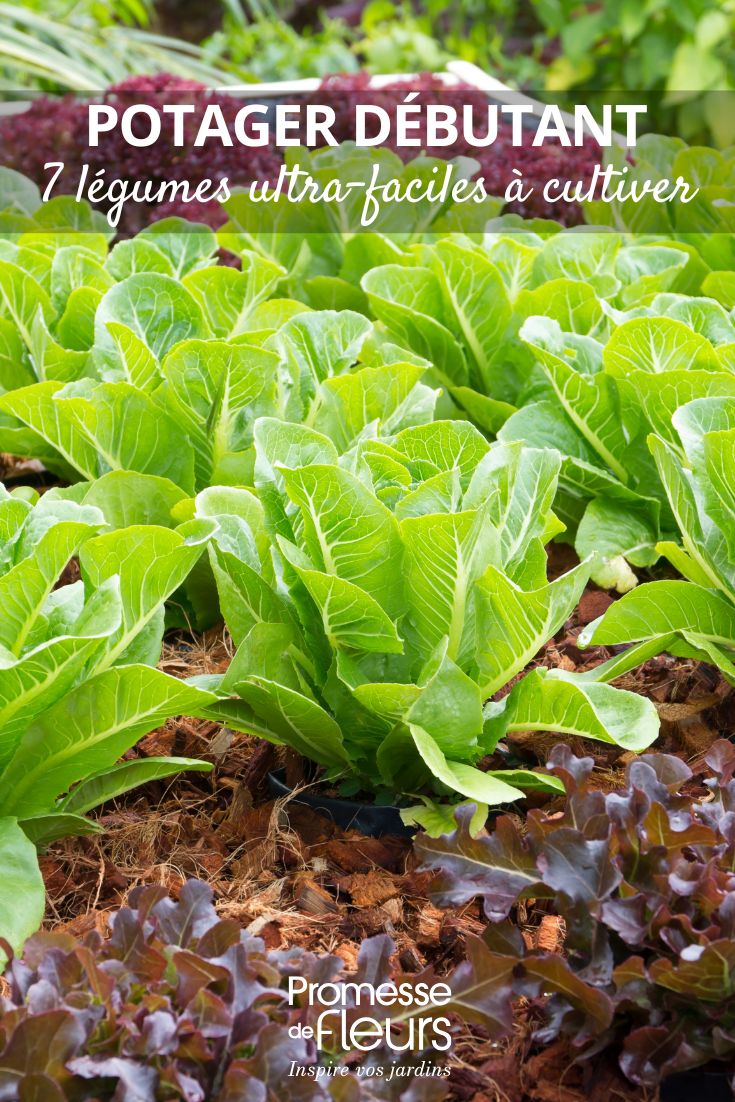































Comments